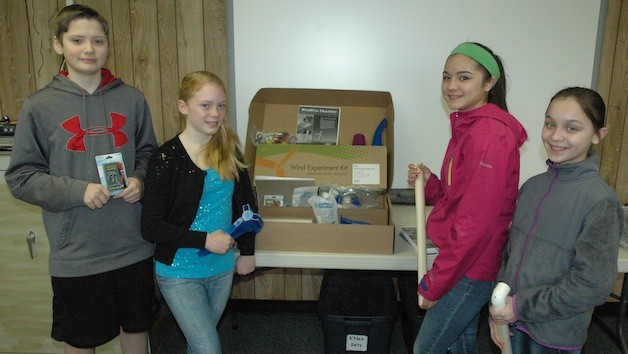LAKEWOOD — Sixth-grade STEM students at Lakewood Middle School will get hands-on lessons on wind power thanks to the Snohomish County Public Utility District, which awarded 10 mini-grants to help schools incorporate energy and water education into their curricula for the 2013-14 school year.
Patti Buchanan wrote the grant application for herself and her fellow LMS sixth-grade STEM teacher, Ron Detrick, to purchase a wind experiment kit, with which their students will learn how to maximize the power output of wind turbines to harness wind energy.
Buchanan noted that the PUD grant covered $500, while the school kicked in the remaining $80, and praised kit supplier KidWind for providing the materials and making them more affordable.
“They gave us a great deal,” said Buchanan, who added that the benefits will be shared between her and Detrick’s classes of roughly 30 students each. “So many other schools went for solar kits, but since our high school already has a solar unit, we went for wind instead.”
Buchanan also appreciated that the wind kits offered more opportunities for experimentation than the solar kits that she tested.
“I purchased one of the solar kits myself, and it wasn’t as big of a ‘wow,'” Buchanan said. “The problem is that the solar panels come already made, which limits the kids’ exploration of the scientific method and engineering design. With the wind kits, you’ve got the added variables of the numbers, shapes and speeds of the wind blades, so you can spend more time on the process.”
Buchanan looks forward to seeing her and Detrick’s students collaborating on not only designing and building, but also testing and improving their wind power models, especially since the versatility of the kits allows multiple groups of students to conduct completely different experiments with the same materials.
“We’re so spoiled with all the hydroelectric power that we have here in Washington, but there are still plenty of areas in the state that could use wind power as well,” Buchanan said. “It won’t replace hydroelectric, but wind can be used in targeted ways.”
Buchanan believes this project will ultimately serve as a springboard to enhance students’ understanding of not only electrical energy and engineering, but also the impacts of such power sources on wildlife and the environment.








